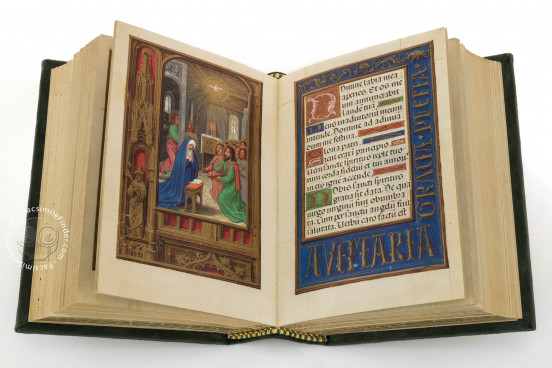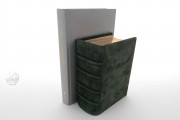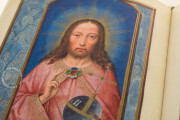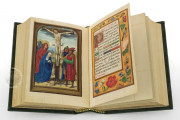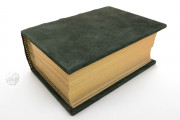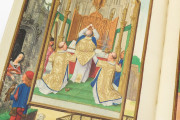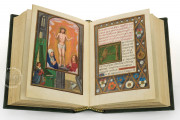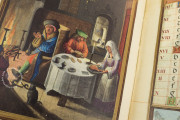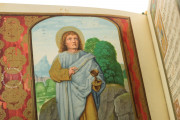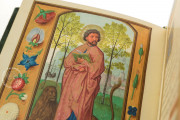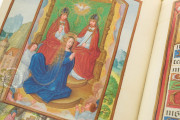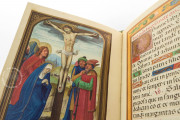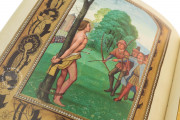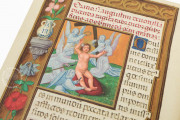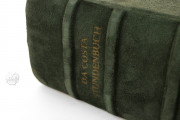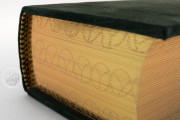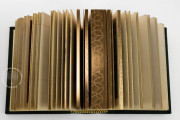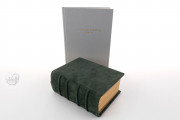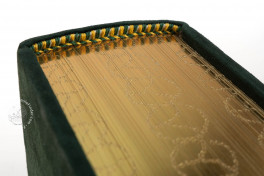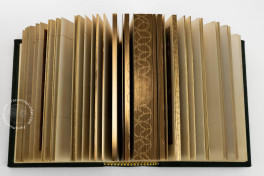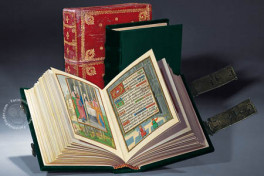The so-called Ghent-Bruges school counted major artists like Gerard Horenbout, Gerard David, and Simon Bening. These illuminators brought the production of manuscripts to levels of excellence. The Da Costa Book of Hours, named after the family that commissioned the manuscript, represents one of the best result in Simon Bening's career. With 121 illuminations, this book of hours is representative of the technical ability and inventiveness of Bening.
The Making of the Da Costa Hours
Made in 1515, the Da Costa Hours is one of the first manuscripts created by Simon Bening. The book of hours was commissioned by a Portuguese customer and it shows the coats of arms of a member of the Portuguese family Sá.
The heraldry was painted over in a later period, and this additional emblem belonged to Don Alvaro Da Costa, treasurer and armourer to the king of Portugal, Manuel I (1495-1521). In 1514, Pope Leo X offered this book of hours as a gift to king Manuel I, who gave it to Don Alvaro.
The manuscript belonged to the Da Costa family for centuries. From the Da Costa’s collection the book passed on to the antiquary Bernard Quaritch and was then sold to the collector George C. Thomas in Philadelphia. In 1910, John Pierpont Morgan bought the manuscript.
Simon Bening: His Career as Illuminator
Active in Bruges, where he was instructed to the art of illumination by his father, Simon Bening found in the city a fervid artistic environment. He discovered the art of Gerard Horenbout, with whom Bening illustrated some manuscripts, and established a great reputation in Europe. Among Bening’s works, the Da Costa Hours stands out for its pictorial quality.
Simon Bening illuminated other important manuscripts like the Book of Hours commissioned by Cardinal Albrecht of Brandeburg (private collection), the Hennessy Book of Hours (Brussels, Bibliothéque royale, Ms. II. 158), the Genealogical Tables of the Royal Houses of Spain and Portugal (London, British Library, Add. 12531), and the Statutes of the Order of the Golden Fleece (Madrid, Instituto de Don Juan de Valencia).
Dramatic Compositions in the Da Costa Hours
Decorating the Da Costa Hours, Bening had to create a variety of compositions. The extensive pictorial decoration of the codex contains two cycles of the Passion of Christ, one for the Officium of the Passion and the other for the Gospels lessons. Also, the representation of the Evangelists is repeated twice.
Bening found inspiration in compositions that had already been used at the time of Charles the Bold by such painters as the Viennese Master of Mary of Burgundy. Bening reinterpreted his models to create extremely original images.
For instance, the Arrest of Christ (fol. 15v) is a scene set at nighttime. Bening used as model an illumination by the Master of the First Prayer Book of the Emperor Maximilian in the Flora Book of Hours. He darkened the scene with deep blue to the point that only torchlights make the pictorial set visible.
Simon Bening enriched the template with dramatic effects. The calendar probably displays the most impressive illuminations. The landscapes in the calendar miniatures are complex for their perspectives and the spectacular atmospheric details.
We have 2 facsimiles of the manuscript "Da Costa Hours":
- Das Da Costa Stundenbuch (Leather Edition) facsimile edition published by Akademische Druck- u. Verlagsanstalt (ADEVA), 2010
- Das Da Costa Stundenbuch (Deluxe Edition) facsimile edition published by Akademische Druck- u. Verlagsanstalt (ADEVA), 2010

